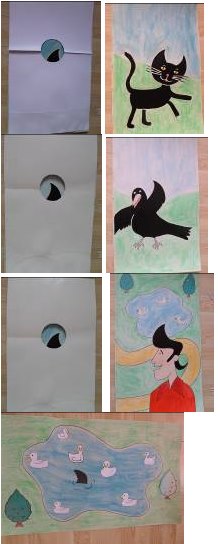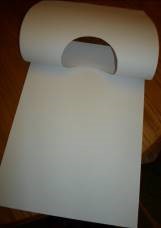Implementing 21st Century Skills in ELT: Learning and Innovation - the 4C’s
Hajnalka Fruttus graduated as an English teacher in 1993 and she has been working as a kindergarten teacher of English as a foreign language since 2006. She is a dedicated teacher of young learners and she believes that teaching foreign languages should start at an early stage. She also works as a teacher trainer and mentor at her institution and runs workshops at conferences. Email: fruttushajni@gmail.com

Why do we need a new approach to language teaching in the 21st century?
We live in a deceptive world. We are flooded with information from everywhere especially from the digital world. But learning what is real and what is fake is a real puzzle. It needs a developed mind and developed thinking processes to figure out what is true, what is valid, what is relevant.
People are not born logical and critical thinkers. This needs to be taught. There is a plethora of great activities to develop students’ critical and creative skills. Most of them are aimed at kids at upper primary and above, especially because of their language knowledge and level of English. That makes me think regularly how it could be built in the development of the very young mind regarding teaching a foreign language where the language level is also limited.
I have searched for knowledge in this area and was greatly motivated by some of the ideas and materials that I have found. It also made me a more aware teacher aiming at the development of critical and creative thinking of the young mind with limited language skills. Guiding young learners towards forming them thinkers starts with activities like observation, comparison, inference, drawing conclusions, recognising cause and effect, making predictions, evaluating, etc. And most importantly by making them curious thus making them asking questions gives the children the opportunity to be self-learners which guarantees lifelong learning.
I have realised that even at the early age we tend not to encourage children to solve problems and experiment because they are “little”, “they need help”, they will be “dirty” or “wet” or “ill” or they will make the room “dirty” or “messy”.
A year ago one of my children at the kindergarten told me “Ms Hajni I can’t sit down.” I immediately saw that the problem was that he just simply had no chair at the table. So stopping what I would do instinctively I started to ask him questions to lead him to find a solution:
- “Ms Hajni I can’t sit down.”
- “Hm.”
- “But I want to sit there.”
- “Why can’t you sit there?”
- “Because there is no chair.”
- “What can you do to have a chair there?”
And he went and brought a chair for himself.
The key thing here was that I did not provide him with a chair what every teacher would do for a little child. (I have tested it several times – teachers do give kids what they need in similar situations.) When I guided him with the prompt “What can you DO to have a chair there?” He immediately realised that he can simply grab a chair from the other table and will have a place to sit down.
I believe a lot of seeds can be planted at this age. We just need to bring it down to their level. Breaking things down to their most basic and tiniest steps is the key to teaching anything to young children. And it also helps forming analytical skills.
I believe that with consequent and conscious teaching of the thinking processes we can make the solid foundations of critical thinking.
Activity plan for age group: 6-9 yrs
|
Theme: |
4 elements |
|
Subject Area: |
Our World |
|
Time: |
World Water Day |
|
Duration: |
2x30 minutes |
|
Content: |
Water |
|
Learning objective: |
Developing critical and logical thinking Developing creativity Experiencing further the feel of water and its qualities Developing sensory skills |
|
Prior knowledge, activities: |
Playing with water - experiencing the feel of water and its qualities Raising awareness of the use of water Songs and literature: Draw a bucket a water (singing game), Slippery fish, Steve Hanson – Water cools my drinks |
|
Educational opportunities, tasks, content for development: |
Developing a healthy life style: everyday physical education Realisation of language and cognitive development and education: language development, (vocabulary building, questions, arguing, presentation), improving thinking processes, developing endurance, attention, focus on tasks, memory Emotional, moral and social development: promoting co-operation, sharing, raising awareness of rules |
|
Didactical role of tasks: |
expanding and revising existing knowledge (on water) , new input (salt water), awareness raising, experimenting |
|
Skill development: |
Developing creativity, logical and critical thinking through experience, through experimenting Developing sensory skills Improving memory, communication skills Developing fine motor skills |
|
Applied methods: |
presentation, demonstration, observation, activity, feedback
|
|
Content of Areas: |
Steve Hanson – Water cools my drinks Slippery fish- song – Charlotte Diamond Draw a bucket of water Five Little Fish Teasing MrShark Nick Sharratt – There’s a Shark in the Park |
|
Integration with other subject areas: |
Music, singing games, Expressive Arts
|
|
Aids: |
sound effect application (ocean drum), folding screen/partition divider to hide behind, water tanks, (with tap water and water with salt in it), flashcards, egg, some other objects for testing “sink or float”, self-made paintings of pictures from the book, paper and pencils |
|
Managing frames:
|
free |
|
Interaction: |
frontal, individual, pair, group |
|
Anticipated problems: |
discipline problems, distraction, task focus and persistence problems, fight over space or aids, “I can’t draw anything” statements |
|
Resources used for planning: |
see content of areas |
|
Description of activity: |
|||
|
Activities before setting tasks: |
|
||
|
Time |
The steps of the planned activity |
Objectives, methods of development, interaction, aids, remarks |
|
|
‘10 |
1. Water - revision
Revision regarding what we have learnt about water and its qualities. colourless, odourless, tasteless liquid some things float, some things sink in it (e.g. feather, paper, bottle cap/ egg, wooden blocks, glass, etc) The use of water (drinking, cooking, flushing, washing, swimming, cleaning, watering, habitat for some animals, etc. Revision of poem learnt: Water cools my drinks Can water be dangerous? Expected answer: “Yes, if we spill it the floor will be slippery.” (possible other answers: flood, drowning) |
frontal activity
Aids: flashcards
The aim here is to encourage individual contributions and check their memories. Also to collect facts, recall knowledge, experience. Anticipated problem: Only the most active one(s) will contribute.
Differentiation: Some children are shy. I use pictures to recall memories. They love all types of aids as motivation. Appraisal on individual contribution. It’s a practice activity with opportunities for positive feedback. |
|
|
‘5 |
2. Sea and ocean – Lead-in Discussion/dialogue session
“Close your eyes - where are we?” I secretly start to play the ocean drum. Expected answer: “Ocean/sea” “How do you know?” Expected answer: “because of the sound” “Very good.” “So are we at the sea?” Expected answers: “yes/no” “How do we know for sure?” Expected answer: “we have to check it/ see it/ because you said so, etc” I show them the instrument. “Ok. This is called an ocean drum. Because it imitates the sound of the sea. So was it really the sea?” “No. Just because it sounds like it, it is not the sea. But it is very helpful when we don’t have a sea at hand. :)”
|
frontal activity, group discussion
Aids: ocean drum, folding screen/partition divider to hide behind
The aim is to find similarities, make comparisons, draw conclusions, give a hands-on experience. To ask questions to challenge truth, opinion and encourage children looking for proof.
|
|
|
‘10 |
3. Tap water vs sea/ocean Experiments:
I place a washbasin full of salty water on the table. And another one of tap water. “I brought you sea water.” (Clever kids might challenge that – for huge appraisal) “It’s exactly like water we examined last time. Is it?” Expected answers: “yes/no/I don’t know/maybe” T: “Let’s check it.” T: “Is it liquid?” Sts: “Yes.” T: “Is it colourless?” – we examine how it behaves with placing differently coloured things at the bottom, in our hands, in a cup, so the answer should come out as YES. “Is it odourless?” – we smell it. YES. (Some kids tend to smell some odour even with tap water or chemicals can change the odourless state but we should come out of the activity as it is the same or similar smell.) THEN we check if things sink or float the same way as with tap water, leaving the egg the last. It is supposed to float. “Whoa. Everything was the same BUT the egg sinks here and floats there. How is it possible? Have we checked everything?” If students do not come up with the solution – “taste”, then we prompt: “liquid, colourless, odourless....” Expected answer: “tasteless” So we taste a drop each. “It is salty. So THAT is the difference. Salt makes things lighter.” |
frontal activity, group discussion individual work
Aids: 2 washbasins (with tap water and water with salt in it), egg, some other objects for testing “sink or float”
The aim is to collect similarities and differences, make comparisons, analyse, draw conclusions, give a hands-on experience, let them experiment. To ask questions to challenge truth, opinion and encourage children looking for proof.
Anticipated problem: Only the most active one(s) will contribute.
Differentiation: I let shy children to experiment with colours, sinking. Appraisal on individual contribution and making conclusions.
|
|
|
‘7 |
4. The Ocean Habitat Short physical activity
“Who live in the sea and ocean?” We collect animals living in the sea and try to move around mimicking their movements.
Then they pair up and instruct each other what animal to imitate.
Revision: Slippery fish
We play 2 rounds of 5 Little Fish Teasing Mr.Shark.
|
frontal work, pair work, group work
The aim is to move about, to get rid of some superfluous energy and get ready for a calm activity with a fresher mind.
Feedback on proper and thorough realisation of movements. |
|
|
‘10 |
5. Nick Sharratt – There’s a Shark in the Park
Kids will listen to the story, repeat repetitive lines and try to guess if there is really a shark in the park. Pictures:
Teacher-centred activity (frontal) |
Aids: self-made paintings of pictures from the book
The objective here is to boost comprehension, improve communication skills, let them enjoy literature and make creative guessings about what can be hidden in the park. Evaluation: on creativity or memory
|
|
|
‘15 |
3. Dorsal Fin Creativity
Kids are given the following template:
The task is to draw a dorsal fin in the circle then complement the picture on the 2nd page to make anything but a shark using the given part (a dorsal fin). Task 2: Presenting the picture and describing what is similar and what is different about a shark and the drawn picture. Results from a real life activity made by 6-year-old children:
|
facilitated individual activity
Aids: paper and pencils
The main aim here is to boost their imagination or creativity
Differentiation: help might be needed with ideas
Evaluation: on creativity
|
|
|
‘3 |
Finishing the activity – cleaning up
We get ready and make our “dirty” hands “clean” with soap and water and get ready for outdoor play. |
acting according to rules and regulations
|
|
Please check the Creative Methodology for the Classroom course at Pilgrims website.
Please check the 21st Century Thinking Skills course at Pilgrims website.
Please check the Methodology and Language for Secondary course at Pilgrims website.
Please check the CLIL for Primary course at Pilgrims website
Implementing 21st Century Skills in ELT: Learning and Innovation - the 4C’s
Hajnalka Fruttus, HungaryFoam Rubber Frames for Creativity: Discovering Our Deep Emotions
Carmen Marchante, SpainSeed Germination Project – Creative CLIL
Anastasia Bykova, RussiaA Virtual Tour to London
Francesca Biz, ItalyEAS and CLIL for Innovating
Gianluigi Basile, ItalyEmpowering HOTS in EFL Settings: A Lesson on Child Prostitution
Yomaira Angélica Herreño, Colombia;Jhonathan Alexander Huertas Torres, Colombia







